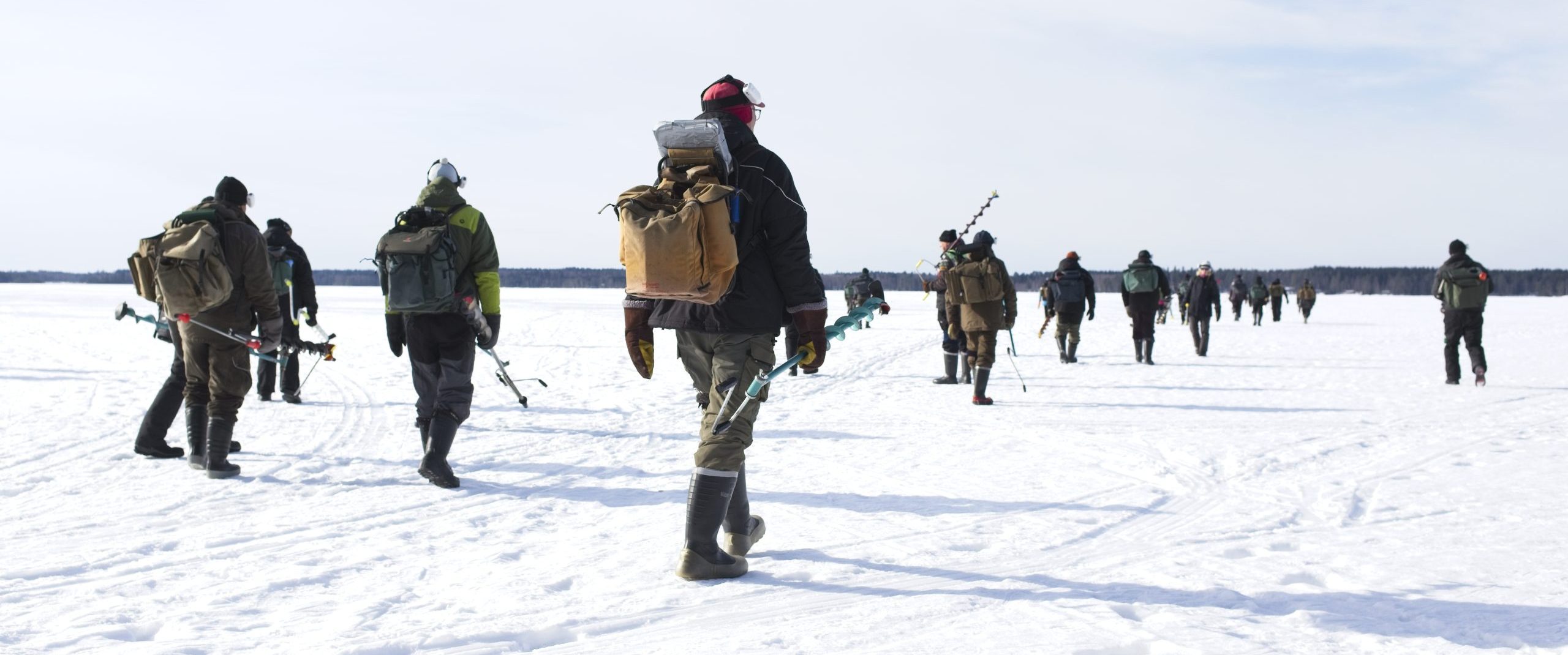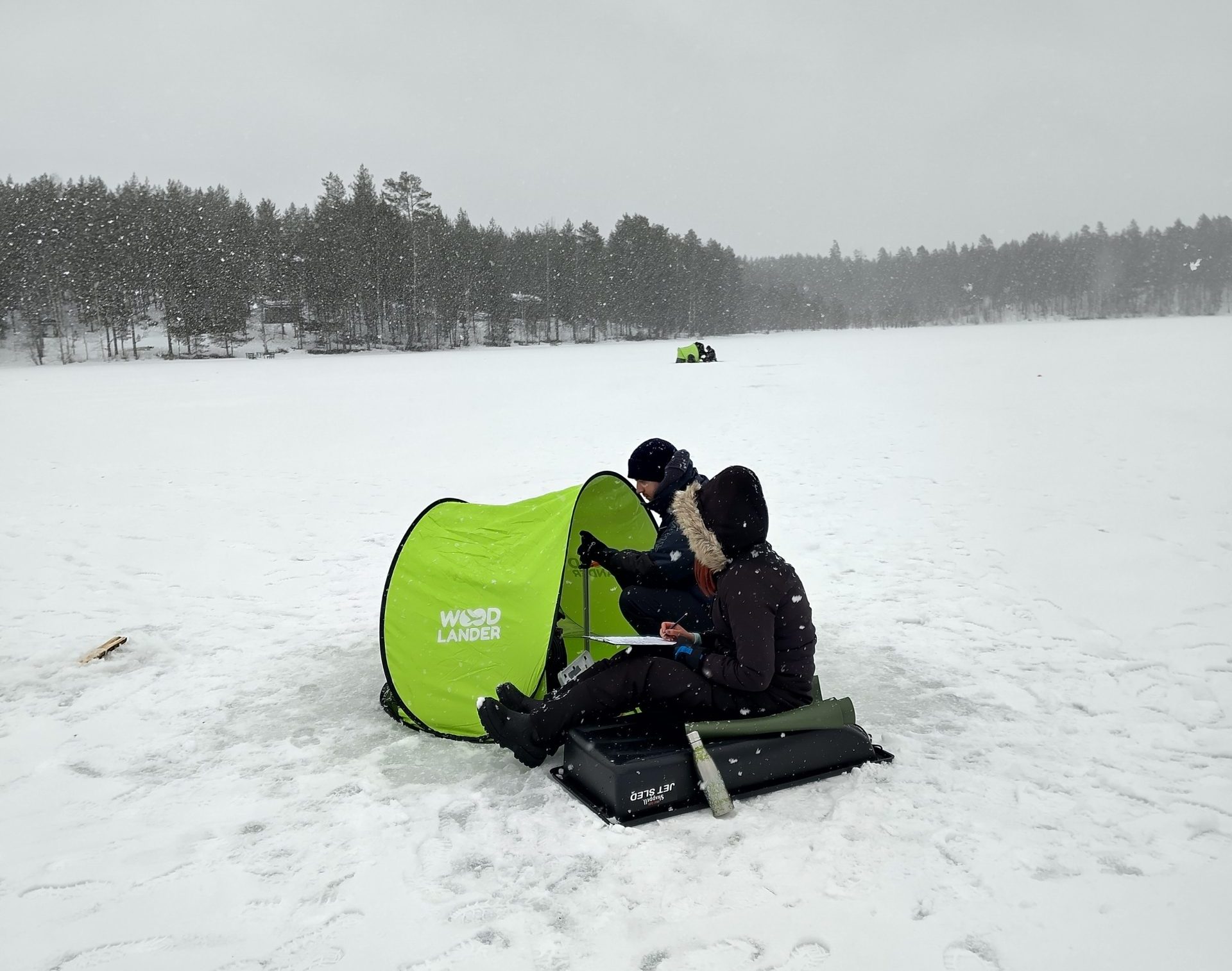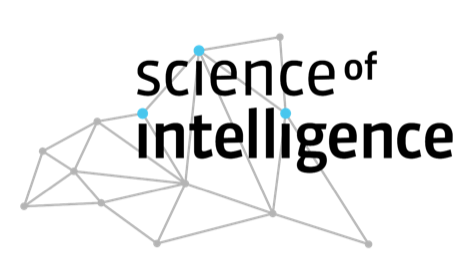The frozen chase: What ice fishing can tell us about collective intelligence
Deep in the icy wilderness of Finland, beneath a half meter-thick sheet of frozen lake, a quiet but high-stakes tale of pursuit unfolds. It is a story about fish and fishermen, but it is also a story about understanding how humans (and other creatures) make decisions together, especially when survival, strategy, and limited information collide. And, if you’re part of the Berlin-based cluster Science of Intelligence (SCIoI), it’s also a thrilling scientific adventure involving sonar tents, data-synced watches, and thermally questionable gloves that smell permanently of fish blood.
At the heart of this expedition is behavioral ecologist Félicie Dhellemmes, whose research might seem deceptively simple: she studies how organisms (such as fish or humans) search for things together. But this search, which is scientifically framed as the “explore-exploit trade-off,” is at the very core of how intelligent systems, natural or artificial, operate. Should we keep exploiting a productive spot, or explore elsewhere for potentially better options? It’s the same dilemma whether you’re harvesting blueberries, navigating traffic, managing a fleet of delivery drones, or, like in this case, trying to outfish a retired Finnish champion on a frozen lake.
A mushroom-picker’s dilemma, rewritten on ice
“Imagine you’re foraging for mushrooms,” Félicie explains. “You find a patch, harvest some, but soon wonder: should I stay or look for another patch?” In ecology, the marginal value theorem gives us an intuition of how this decision should be made: you should leave when your current returns drop below the expected average in the environment. This mental calculation might seem relatively straightforward when the resource you’re after stands still.
Things get dramatically more complex when the resource, like a fish, moves, and even worse, reacts to your presence. The classic explore-exploit question suddenly transforms into a strategic arms race: you’re not just looking; you’re being watched.
To tackle this problem scientifically, Félicie, computational scientist Valerii Chirkov, and PI Ralf Kurvers from SCIoI orchestrated an ingenious experiment with real-world stakes and an unlikely cast: retired Finnish ice fishers with an unbreakable passion for competitive angling.
The grand ice tournament of cognitive ecology
Each winter, dozens of seasoned anglers–mostly retirees who travel Finland for weekend championships–carpool into the snowy backcountry to fish with the researchers. During the week, they participate in a custom-designed, data-rich fishing tournament. The rules are simple: whoever catches the most fish (by weight) wins a cash prize. Everyone pays to enter. Everyone wants to win.
The researchers, meanwhile, are busy collecting something else: decision-making data. Each angler wears a head camera and a GPS-enabled sports watch. These tools track where they go, what they see, and crucially, when and where they catch fish.
On the frozen lake, every movement is a costly decision. “Drilling a new hole is serious business,” Félicie laughs. “The ice is 60 centimeters thick. You don’t move without thinking.” The stark, treeless landscape offers minimal clues. There’s no shrub or slope to guide intuition. Just white, flat desolation. That’s what makes it the perfect natural laboratory.
But data-gathering in subzero temperatures is no gentle affair. The team uses expensive sonars to track fish movements beneath the ice. To protect them, Félicie and her team use tiny tents — “for the sonars, not for us,” she notes. “We watch from outside. In the snow.”







